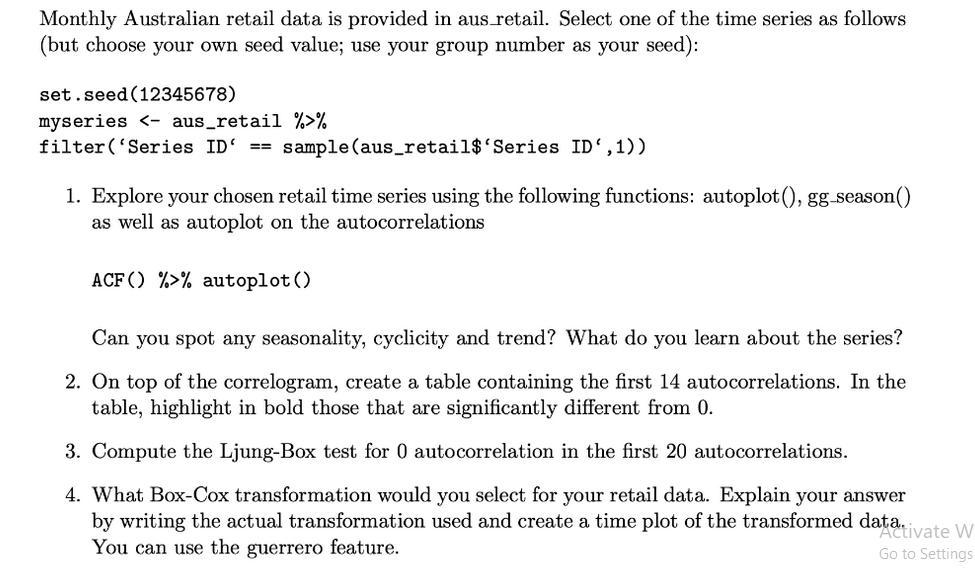Answered step by step
Verified Expert Solution
Question
1 Approved Answer
Monthly Australian retail data is provided in aus retail. Select one of the time series as follows (but choose your own seed value; use

Monthly Australian retail data is provided in aus retail. Select one of the time series as follows (but choose your own seed value; use your group number as your seed): set.seed(12345678) myseries < aus_retail %>% filter('Series ID' == sample (aus_retail$'Series ID',1)) 1. Explore your chosen retail time series using the following functions: autoplot(), gg_season () as well as autoplot on the autocorrelations ACF() %>% autoplot() Can you spot any seasonality, cyclicity and trend? What do you learn about the series? 2. On top of the correlogram, create a table containing the first 14 autocorrelations. In the table, highlight in bold those that are significantly different from 0. 3. Compute the Ljung-Box test for 0 autocorrelation in the first 20 autocorrelations. 4. What Box-Cox transformation would you select for your retail data. Explain your answer by writing the actual transformation used and create a time plot of the transformed data. You can use the guerrero feature. Activate W Go to Settings
Step by Step Solution
There are 3 Steps involved in it
Step: 1

Get Instant Access to Expert-Tailored Solutions
See step-by-step solutions with expert insights and AI powered tools for academic success
Step: 2

Step: 3

Ace Your Homework with AI
Get the answers you need in no time with our AI-driven, step-by-step assistance
Get Started


